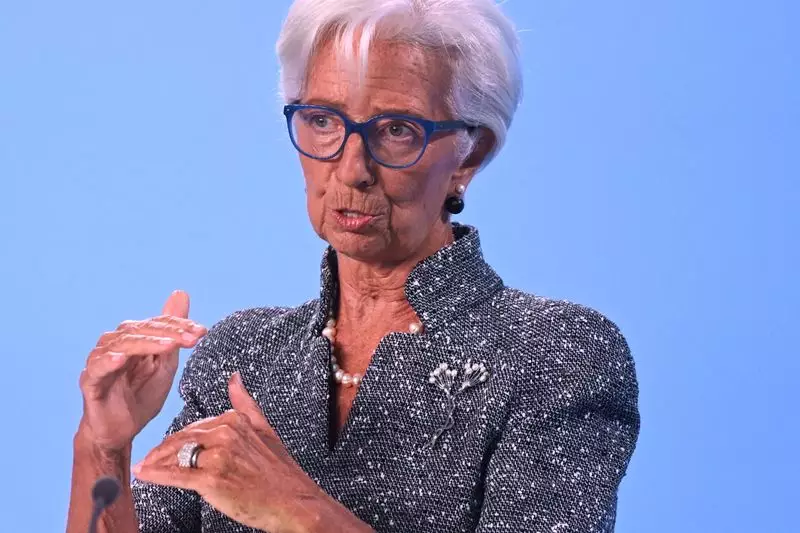The recent decision by the European Central Bank (ECB) to cut interest rates for the fourth time in a year reflects the challenging economic landscape faced by the Eurozone. As geopolitical tensions and internal instability impact growth, it is crucial to contextualize the ECB’s actions and predictions during a pivotal period of adjustment.
ECB President Christine Lagarde highlighted the “clear direction of travel” the Bank is following. This sentiment reflects not only a commitment to financial moderation but also an acknowledgment of the significant hurdles that lie ahead. The Eurozone is grappling with multifaceted political and economic uncertainties, including a potential trade confrontation with the United States and various domestic challenges. These factors have collectively led to a reduction in growth forecasts, prompting the ECB to reconsider its monetary policy approach.
Impact of Tariffs on Inflation
The complexity of the current economic environment is further complicated by tariff-related issues. Lagarde remarked on the uncertain overall impact of these tariffs on inflation, emphasizing that the situation involves “moveable parts.” This uncertainty speaks volumes about the interconnectedness of global economies in the modern landscape. As tariffs can disrupt supply chains and alter consumer prices, they pose significant risks that complicate the ECB’s ability to manage inflation effectively.
A Landscape of Uncertainty
During her address, Lagarde repeatedly underscored the theme of uncertainty, noting that it played a pivotal role in recent discussions within the Governing Council. This acknowledgment is critical; it paints a picture of central bankers who must navigate an unpredictable economic terrain. They face pressures not only from inflationary dynamics but also from consumer sentiment and external geopolitical influences. Such uncertainty has the potential to hinder recovery and complicate policy decisions.
Inflation Composition: More than a Number
Lagarde expressed the ECB’s desire to see a more favorable composition of inflation to instill confidence that the central bank is nearing its target. This insight alerts us to the nuanced nature of inflation—merely hitting a numerical target on a chart does not guarantee economic stability. It is essential for the ECB to understand the underlying factors in inflation rates; otherwise, the mechanisms to adjust policy may falter under misleading surface-level indicators.
The multifaceted risks surrounding inflation were another key focus. While some pressures push inflation upward—such as rising energy prices and heightened geopolitical tensions—others suggest a potential downturn. Lagarde observed that factors like low consumer confidence and international trade complications have the potential to dampen demand significantly. This duality represents a delicate balancing act for the ECB as it aims to stabilize inflation at 2% without stifling growth with excessively conservative monetary policies.
In the current climate, the ECB maintains a cautiously optimistic outlook on growth, stating that the economy should progressively strengthen over time. However, there is recognition that this recovery may unfold at a slower pace than previously anticipated. The combination of more affordable credit and a buoyant consumer environment could spur growth, provided trade tensions do not escalate further.
Crucially, Lagarde reaffirmed the ECB’s commitment to a flexible approach towards interest rates, emphasizing that future decisions will hinge on evolving economic conditions and incoming data. This adaptability is essential in a world where economic signals can fluctuate rapidly. Observing how global and local economies respond to these policy adjustments will be critical for both the ECB and market participants moving forward.
The recent interest rate cut undertaken by the ECB is a reflection of both current realities and future uncertainties. The balancing of inflation risks alongside growth prospects presents a profound challenge for financial policymakers. As the ECB continues to navigate this complex economic landscape, its adaptability and responsiveness will be vital in ensuring stability and fostering resilient growth in the Eurozone.

